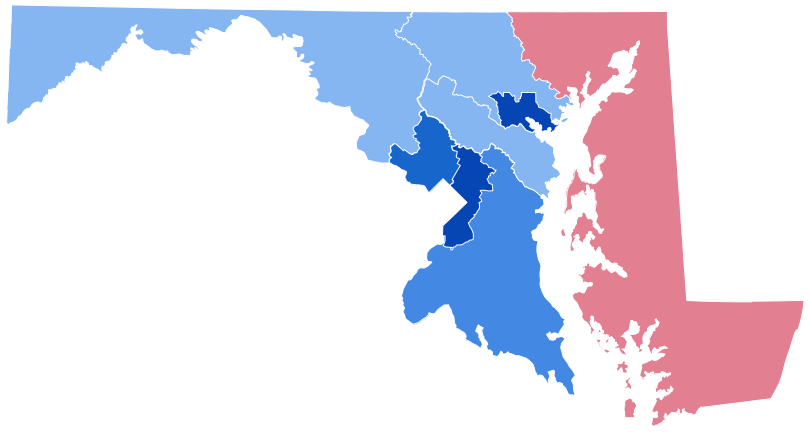2022 Legislative Preview by District 36 Delegation, Part 1

On Monday, Jan. 10, the Kent County Chamber of Congress hosted its annual legislative preview, giving the District 36 delegation a chance to talk about the upcoming session of the Maryland General Assembly. The session, conducted online via Zoom, featured State Senator Steve Hershey and District 36 Delegates Jay Jacobs (Kent County), Jeff Ghrist (Caroline) and Steve Arentz (Queen Anne’s). All four are Republicans. The event was also sponsored by the League of Women Voters of Kent County.
Chamber Vice President Barbara Foster introduced the delegates, then turned over the mic to moderator Kate Van Name. As one would expect given the Chamber’s orientation, many of the questions concerned economic development and ways legislation can affect business on the Shore.
Van Name opened by asking how the General Assembly will conduct business during the pandemic, and how legislators can help businesses stay open as new covid-19 variants emerge.
Hershey noted that it had been two years since “we were all physically together” for the Chamber’s legislative preview. The General Assembly is dealing with the same conditions, he said. “Our committee hearings, at least for the first month, will be held virtually.… We will not be all in the room together for these committee hearings, we will be in Zoom meetings.”
Citizens testifying to the committees will do so virtually, he said. He said the delegates recognize the need to protect the public and each other from the pandemic, but he added, “I think all of us believe that we have much better and more interactive committee bill hearings when people are there in person, when we have the ability to question and get responses from people in person.”
The voting sessions will be held in person, but without public attendance, he said. The sessions will be streamed. Hershey said he felt the lack of in-person public participation in the hearings was often detrimental to the delegates’ understanding of the issues at stake.
Arentz agreed that the lack of in-person input was unfortunate. The good news, he said, is that the number of people who will be able to testify in House hearings has been increased this year.
Jacobs said the legislators want to hear what challenges businesses are facing. “Anything that we can be of help with, we certainly want to know right away.” He said his office is still dealing with a number of unemployment cases, including cases of unemployment fraud.
Ghrist said those seeking to testify to a committee hearing can no longer sign up the same day as the hearing. He said the various delegates’ offices would be available to help anyone who wants to testify to sign up in advance.
Van Name asked what plans the state has to promote economic development on the Eastern Shore.
“I think we’re going to continue to see the promotion of Maryland in its entirety as a place that we can attract businesses to,” Hershey said. Promotion of the Shore takes place mainly on the county level, he said. He cited the I-95 corridor in Cecil County and KRM Development in Chestertown as success stories in local development. He said the state could help by keeping down taxes and fees, which he said businesses often cite as hurdles to locating here.
Last year the Assembly saw a lot of legislation related to unions and prevailing wages, issues he said are not business-friendly. He said that right-to-work laws, which allow workers to choose not to join a union or pay union dues, would help attract business. Allowing counties to enact such laws independently of the state could help build the economy, he said.
Ghrist said the biggest challenge businesses are currently facing is staffing. He said the Democratic majority in the Assembly wants to allow people to work from home, “or not work at all, and still get paid.” He said that if there is another supplemental unemployment benefit, “we need to fight that down.” He suggested that the omicron variant of covid-19 is not as dangerous as previous strains, “so folks need to work. We need to make sure that we have productive citizens.”
Arentz said the number of people who have dropped out of the workforce is unprecedented. “We need to find out where those people have gone, and what we need to do to bring them back for good.”
Jacobs confirmed that the lack of workers was a major problem. “It’s not just in our four counties, it’s statewide,” he said. “It’s especially tough for us over here.”
Van Name asked how the state can address those issues, especially in such areas as healthcare.
Hershey said many healthcare workers have told him that having their children out of school was a problem. He said the workers are forced to choose between working, staying home with their children, or finding childcare help. He noted recent problems in Chicago, where the teachers’ union has insisted on safe working conditions. On the plus side, he said, “We’re still on track with the Chestertown hospital, in creating the aging and wellness center there,” which would mean the retention of ICU and inpatient beds.
Arentz agreed about the importance of keeping children in schools. “They are the least vulnerable, as far as major concerns with [the pandemic],” he said. He said closing schools has a negative effect on the workplace, and that working from home has hurt worker productivity.
He suggested that education is a key to workforce development, and spoke in favor of a vocational/technical school on the Shore to help create skilled workers. He said “the businesses have stepped up” by offering attractive wages and working conditions. But the environment on the Shore favors smaller businesses and farms rather than the big employers the rest of the state has. “I think we need to find a better way to attract those people into those markets,” he said.
Ghrist said legislation was passed a couple of years ago allowing the five counties in the Chesapeake College service area to build a regional tech school. He said the idea was building momentum. Creating such a facility in small counties presents challenges. It’s not easy to fill a classroom. Finding the money and resources to build a good facility is also harder in smaller jurisdictions.
He said that Delaware was doing a better job than Maryland with tech education facilities. However, he said, Chesapeake College has a state-of-the-art nursing school; “The facilities there are nicer than a lot of the hospitals out there,” he said. He said expanding the ability of high school students to get training in trades and in healthcare should produce positive results.
Van Name asked if the proposed wind energy project off the coast of Ocean City was likely to have positive economic impact on the Shore.
“I think that remains to be seen,” said Hershey. Legislation authorizing the project was passed in 2013, but to date there has been no resulting “economic boom.” “I think we’re still probably a few years away from getting the first turbine in the water,” he said. He said the project has been subsidized “to the tune of over $400 million that will come from ratepayers in the form of increased electric costs,” which will have to be weighed against possible economic benefits.
Arentz said that wind has been more effectively developed in other countries than in the U.S. He questioned why Maryland needs to spend money reinventing technology that Europe already has.
Van Name asked how energy policy as a whole will affect the Shore.
Arentz said “As far as renewables, I think that’s a great idea. I think most of us would support it.” His committee sees a lot of bills related to energy independence, “but the problem is that we don’t really have the ability to do that.”
Buying from out-of-state increases the cost of energy to users, he said, and it isn’t easy to tell whether the energy is being generated in a renewable manner. The higher cost is especially a problem for those who are economically challenged and may not live in an energy-efficient home, he said. He also noted that the Shore has a lot of land that is ideal for renewable energy generation, but that conflicts with its value as farmland. “It needs to be looked at harder,” he said.
Jacobs said the “massive” energy bill introduced in the legislature last year had “so many moving parts” that the legislators couldn’t tell how much it would cost. In the end, the bill was split up and parts of it were passed piecemeal as attachments to other legislation. He said that the Shore was being looked at for solar fields, at the potential cost of losing productive farmland. “It’s really a contentious issue,” he said. “You can’t just put solar fields anywhere you want.”
Hershey said the benefits to the environment need to be weighed against the cost to consumers. He said the state will always be a net importer of energy. Solar power will be only a small fraction of the renewable energy the state needs. He noted that Delmarva Power was going before the state’s Public Service Commission to request increases in energy rates amounting to $27 million for its customers on the Shore, an average annual cost of $130 per customer.
This is Part 1 of the report on the legislative preview from the Eastern Shore’s District 36 delegates. Look for Part 2, focusing on the state budget, implementation of the Kirwan plan for education, and the impact of climate change on the Shore, in an upcoming issue of Common Sense.
Peter Heck is a Chestertown-based writer and editor, who spent 10 years at the Kent County News and three more with the Chestertown Spy. He is the author of 10 novels and co-author of four plays, a book reviewer for Asimov’s and Kirkus Reviews, and an incorrigible guitarist.
Common Sense for the Eastern Shore







